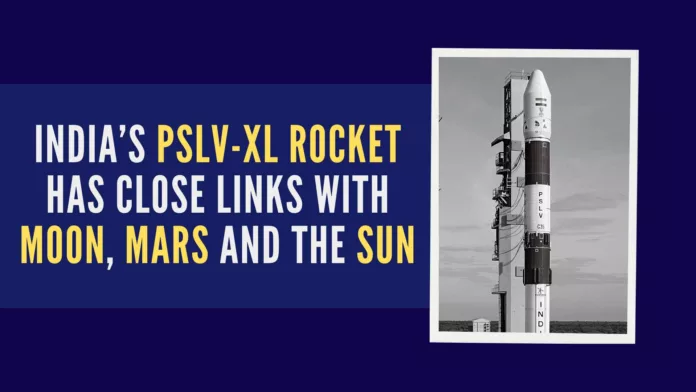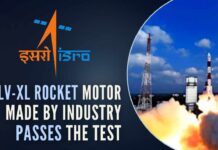
India’s PSLV-XL Rocket: Connecting the Moon, Mars, and the Sun
The XL variant of India’s Polar Satellite Launch Vehicle (PSLV) seems to have an interesting connection with the Moon, Mars, and now the Sun.
The rocket made its maiden flight on October 22, 2008, for India’s first interplanetary mission – the Moon Mission-1 or Chandrayaan-1.
On November 5, 2013, the rocket was used for India’s first Mars Mission called the Mars Orbiter Mission (MOM).
Nearly 15 years after its first flight and on its 25th mission, the rocket code named PSLV-C57 is being used for another interplanetary mission – to study the Sun- by the Indian Space Research Organisation (ISRO).
The 44.4 metre tall PSLV-C57 rocket with a lift-off mass of 321 tons will carry the spacecraft Aditya-L1 — named after the Sun God in Hindu mythology- to study the Sun.
The rocket is slated to lift off at 11.50 a.m. on Saturday.
The September 2 rocketing comes after India landed on the Moon on August 23 with its lander safely landing on the lunar soil in a textbook style.
In its normal configuration, PSLV is a four-stage/ engine expendable rocket powered by solid and liquid fuels alternatively with six booster motors strapped onto the first stage to give higher thrust during the initial flight moments.
The rocket that will fly on Saturday was the XL variant – with longer strap-on motors carrying higher fuel quantity.
The PSLV-XL variant was also used to launch AstroSat, India’s first dedicated Space Astronomy Observatory on September 28, 2015.
ISRO has five types of PSLV rockets – Standard, Core Alone, XL, DL, and QL.
The major difference between them is the use of strap-on boosters which in turn largely depends on the weight of the satellites to be orbited.
[With Inputs from IANS]
PGurus is now on Telegram. Click here to join our channel and stay updated with all the latest news and views
For all the latest updates, download PGurus App.
- Myanmar authorities seize 100 Kg methamphetamine, 13 kg of ketamine in southern region - April 28, 2024
- Centre permits export of 99,150 tonnes of onion to 6 countries - April 28, 2024
- Delhi Congress chief resigns, cites party’s alliance with AAP - April 28, 2024









[…] Source Link […]